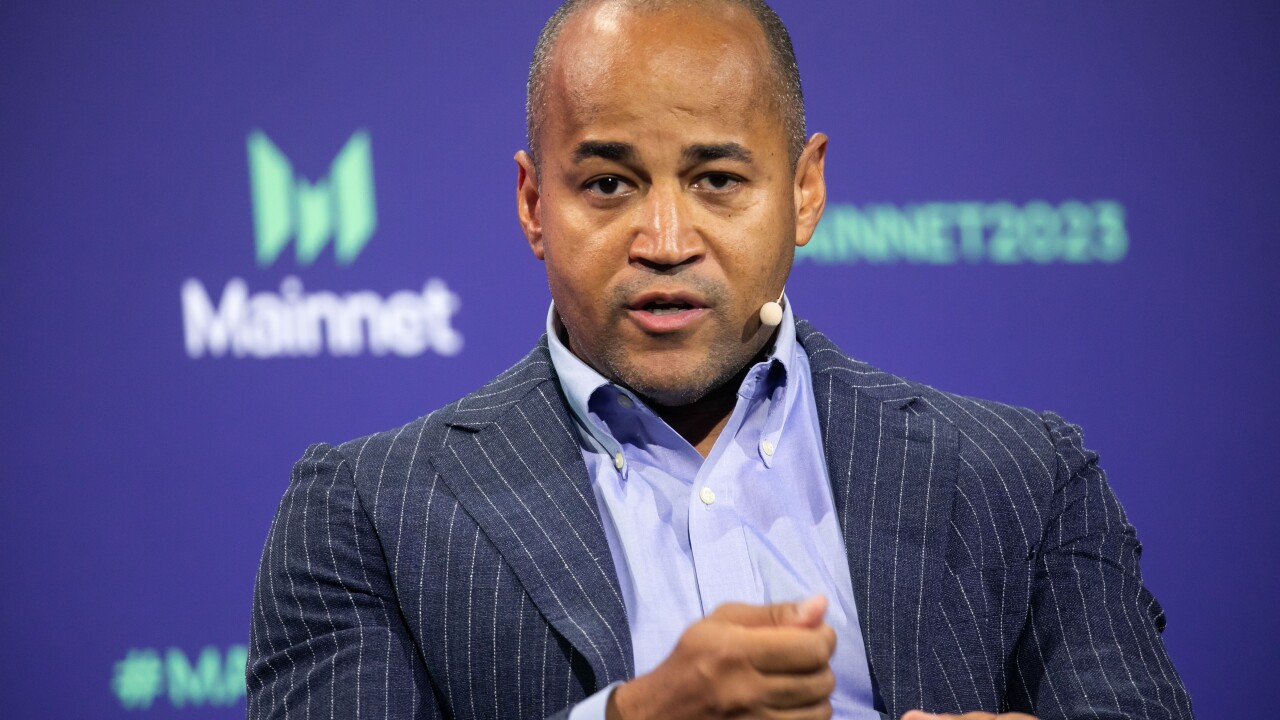BNY Mellon is rolling out a new mobile application for investment managers and developing technology that allows the the user to interact with the device in varying ways depending on the circumstances.
"Investment managers tend to travel a lot," says Shekar Panalla, CIO for BNY's global markets business. "We want them to be able to move money around wherever they are."
BNY Mellon's new TreasuryEdge Mobile app is designed to help clients manage their electronic banking transactions and access related information from tablets. The bank will eventually allow the services to be accessible to other devices. TreasuryEdge Mobile is one of a growing series of integrated applets available via BNY Mellon Connect from BNY Mellon's liquidity services, asset servicing, and global markets businesses. The new app includes a number of new services, such as displays of information about a client's cash accounts to aid cash investment decisions; a feature that lets clients report and make payments, and transaction tools that let clients create, verify or release intra-company transactions.
The bank is leveraging context-aware technology licensed from Openstream that allows the app to run across different devices and to let the user engage with the application in different ways depending on the user's conditions and the features of the device itself.
Context-aware computing technology combines analysis and memory of "hard sensors," such as location awareness, and "soft sensors" such as user preferences. The technology is also designed to facilitate single mobile applications that can run on all phones, tablets, and other devices. Applications built on the platform will allow user interaction through speech, gesture, and typing, and are designed to adapt to the network connectivity present and other ambient conditions.
For example, sensing that the user is moving (as in a car), Openstream's technology, based on W3C multimodal standards (a standard that facilitates interaction through keyboard, mouse, voice, speech, touch, and gesture), allows the banking app to use voice activation technology to interact with the banking application.
Similarly, the user can receive rich alerts and content, based on the technology's ability to sense where the consumer is, what kind of device and network are being used, and other contextual information.
"User experience is critical to the delivery of sophisticated mobile applications," Pannala says. "To that end, we have put in place the foundation technology for natural, device-appropriate interaction. As we roll out applications, we will be enabling context-aware interaction using voice, gesture and other natural interaction capabilities. Users will be able to simply say 'transfer money from account A to account B' as well as use touch or keypad inputs. While we may not implement all the features on day one, it is important to have an architecture for the future."
Openstream did not disclose other clients, but says it has clients in healthcare, financial services, media and entertainment, and utility and transportation sectors. Other providers of context aware computing include Volzle, Pontis, Telnic and other firms.
Analysts say the use of voice recognition and other technology embedded in the mobile device — such as GPS to determine positioning or location — is part of the next wave of mobile banking innovation. Gartner says that by 2015, 40 percent of the world's smartphone users will sign up for context services that track phone usage and other contextual activities.
"The remarkable thing is that in some ways we're coming full circle. A phone is something that you can actually talk into, except we'll be able to talk to it for a lot of things," says Mark Schwanhausser, a senior research analyst for Javelin Research. "This is also evidence that maybe the pundits were premature when they joked that the iPad was an iPhone without the phone, and then mocked it as too big to hold up to their ear."
Schwanhausser says tablets are awakening the imagination of consumers, developers and financial institutions, who see the potential for a device that is mobile yet extremely powerful when it comes to looking at, analyzing and interacting with information.
"Voice activation is a new frontier, and a necessary one. There will be much experimentation to determine what voice-activated ideas truly pan out profitably for financial institutions, and the initial experiments will be hampered by technology's capabilities," Schwanhausser says. "But I expect we'll be seeing many attempts in the coming months and years to discover the best way to integrate voice commands and Skype- or Facetime-like capabilities in financial services. There's plenty of potential for executing routine transactions like stock trades or bank transfers, as well as more complex interactions with financial advisors in branches or in distant service centers."
David Albertazzi, a senior analyst at Aite, says the BNY rollout is part of a trend toward making better use of the mobile device. "It's not just reformatting the user experience to fit the screen," he said.
For example, Albertazzi says newer mobile security applications require a user to enter a PIN for re-entry to a banking app if that mobile device is placed "face down" on a surface. Albertazzi said other examples include more uses of "location awareness" of the devices, as well as cameras.
Albertazzi also mentioned technology firms are developing "gesture-based" navigation, in which the user moves his or her finger around the screen to access banking app icons, rather than actually clicking on those icons or touching them directly. [Apple does not yet support gestures in its devices, but has said the feature is on its drawing board.]
"In general with mobile banking, the big improvements over the past few months have revolved around navigation and rich client applications," Albertazzi said.





